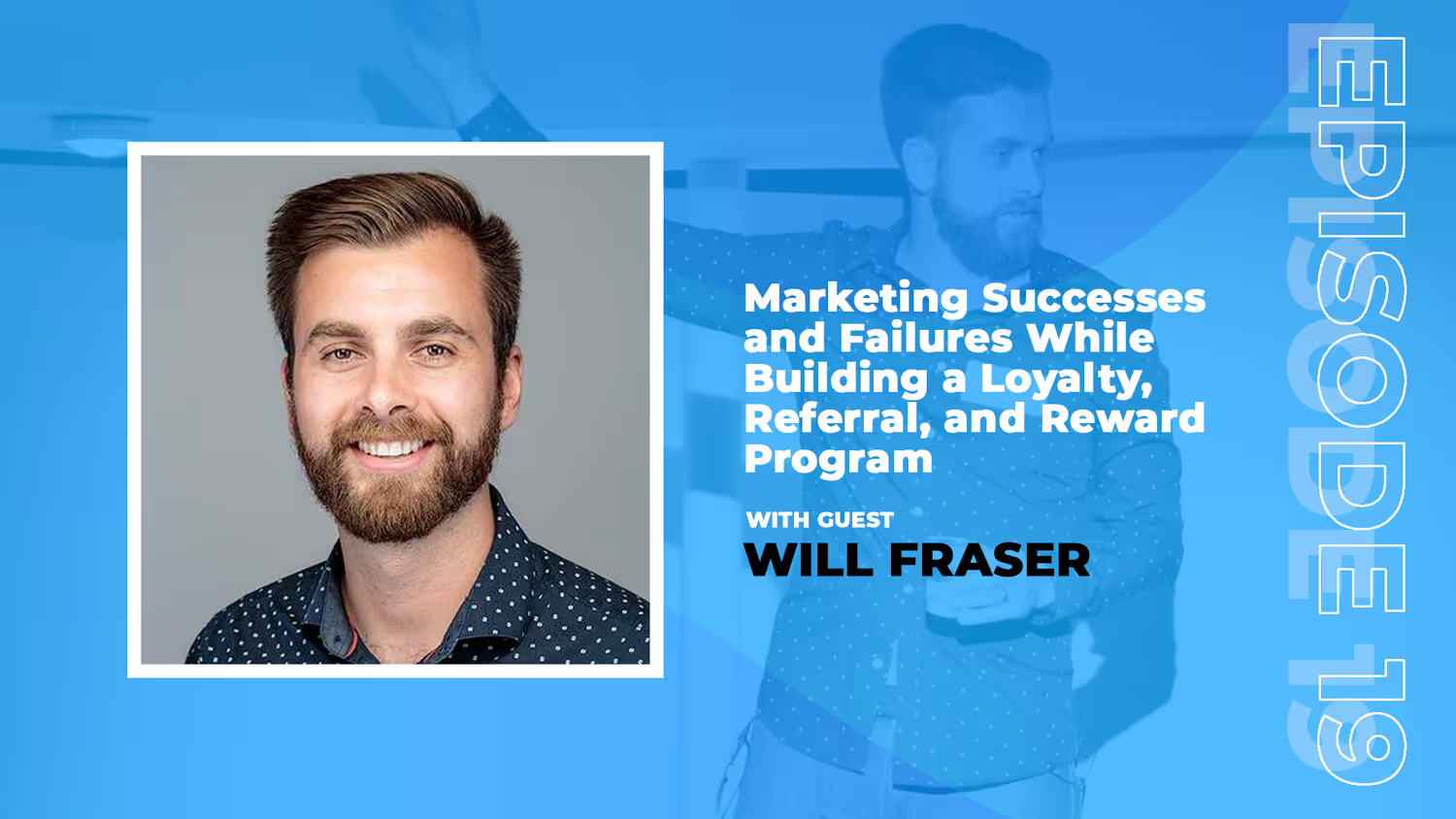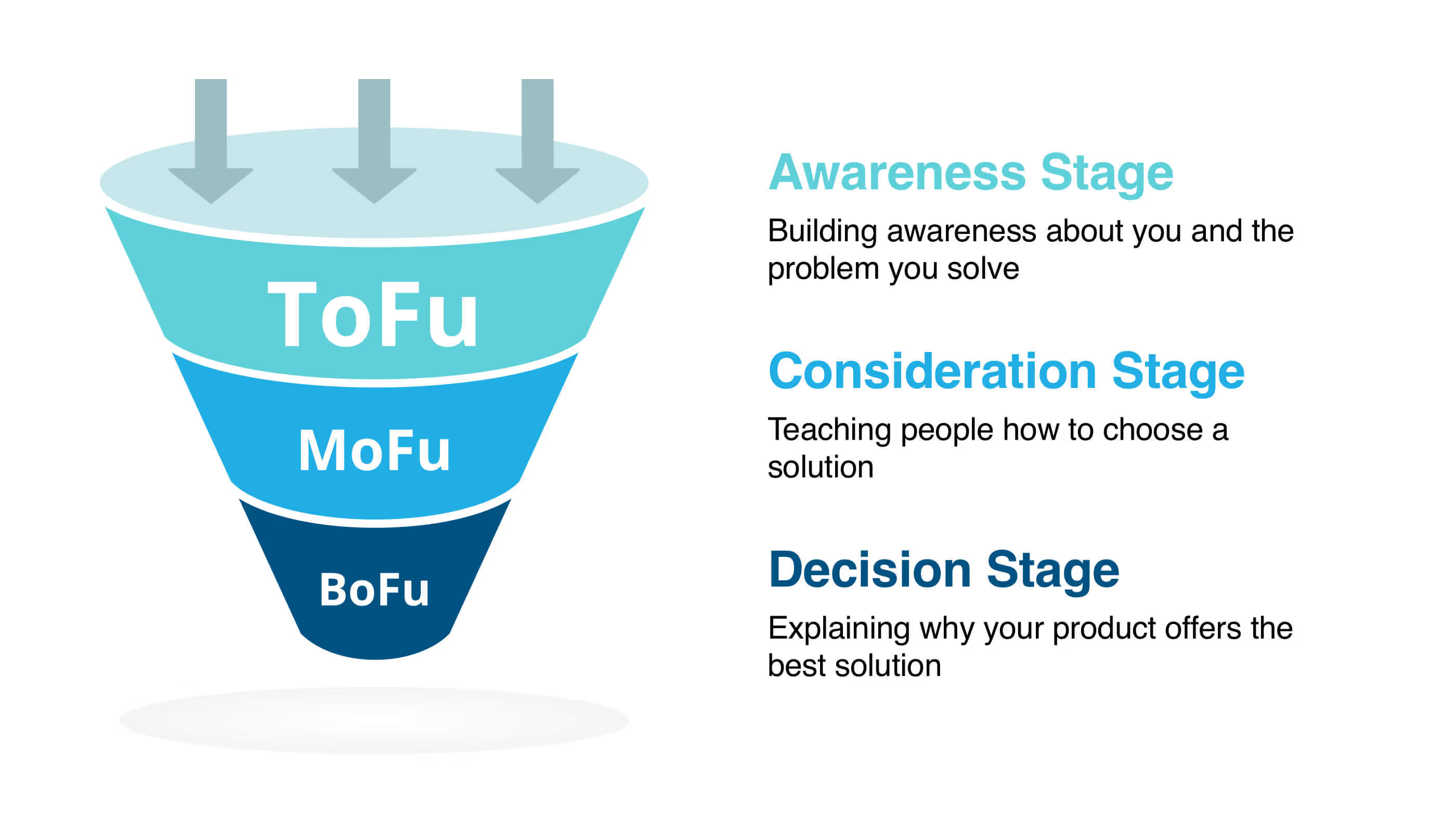Podcast: Marketing successes and failures with SaaSquatch CEO Will Fraser
We’re excited to have had our very own SaaSquatch co-founder and CEO Will Fraser featured on the Turbulent Marketing Podcast by Jetstream Digital to talk all things marketing.
Alongside host Mike Williams, Will discusses the learnings from SaaSquatch’s earliest marketing techniques. He reveals his top tips for new content marketers, the opportunities for growth in the middle of the funnel, plus the importance of knowing your audience in order to build brand loyalty.
Listen to the entire podcast below, or keep reading to learn our three favorite take-aways from the episode to elevate your marketing in 2021.
How to create engaging content as a content marketer
Whether you’ve been writing content on the web for years, or are just starting out, it’s important to understand what people want to read, and how they want to read it.
Will shares his two best tips for content marketers to create engaging articles that add value for every type of reader:
Will Fraser 26:01
I've got two really simple strategies that I've shared with people before.
The first is for a new content writer. One of the techniques I've shown people before is to turn on your phone's audio recorder, and tell me about your article - just talk to me through it.
And then take that, write it out, and edit what you communicated to me. Especially if you're new to content, it's really easy to accidentally write an academic paper. No one likes academic papers - the conversational tone between me and you is much more engaging. To get into that tone, you can actually have a conversation maybe with yourself or with an animal, record it and then capture it, and go from there.
The second thing I always say is, there are three different types of readers who are going to read your content:
- “Skimmers”: They need to be able to summarize this article from headlines only. If I go through your article and read your headlines, and I can't give a summary of this article, you haven't won.
- “Skim and reads”: They're going to skim to find the section that's really interesting, and read that. The context of the content of each section should be able to stand on its own. You should be able to skim the headlines, get there, know enough that you can then read that one section and move on.
- “Top-to-bottom readers”: That's the easy group because you wrote the article top to bottom. And that makes sense.
I feel like really great content today has to be written with three different audiences in mind. So you can hit that kind of reader and everyone can get some value and see the value of what you're talking about.
Mike Williams 28:03
Yeah, I really like the conversational tone. I think that's so important. Because you do see those academic papers out there. And they're just not really interesting, and they don't really pull you in, whereas a conversation is something you want to be a part of.
Don’t miss opportunities for growth in the middle of the funnel
The typical sales & marketing lead funnel is separated into three parts: The top, middle, and bottom.
Many brands have strategies in place to acquire leads at the top of the funnel, and are able to answer specific questions at the bottom of the funnel once it’s time to close the sale, but the middle of the funnel can easily turn into a “wasteland” with no specific content or direction for buyers at this stage.
Will shares what the content in the middle of the funnel should be used for, and why it’s important.
Will Fraser 30:30
We came back around to the online course idea recently, and ended up launching the Digital Loyalty Academy. We wanted to put together some solid educational material to get people from zero to 60 on what exactly it is that you need to know and think about when running a loyalty program with the digital world in mind.
Now, there are lots of people that have written on the topic of loyalty programs, it's very competitive. However, most of it still teaches you that same topical level that in all honesty, if you've been a consumer, you probably already know. As a person who exists in the commercialized world, I have been a member of rewards programs and loyalty programs just because I exist. The top of the funnel is in our industry, at least, has pretty much been educated by universities and life experience.
So what we decided to focus on is more of a middle of the funnel content strategy, where:
- It's about answering detailed questions,
- It's about providing serious educational value,
- And then ultimately, it's actually answering sales questions.
So we've stepped away from simple “10 things you should know” articles, and stepped into an actual course, where you complete assignments, we grade them, we get back to you, and you have a real chance to learn it. The coolest thing about the Digital Loyalty Academy is that it's now being made part of the curriculum at several universities.
To the same degree, our blog is also focused much more now on questions that a customer who is 50% of the way down the funnel is interested in. For example, I've got a blog article on how our referral programs maintain GDPR compliance in Europe. If you do not care about GDPR, compliance, or referral programs, this article will obviously not appeal to you. But if you do care, we have lawyers, accountants, product managers, and other people that are very deeply concerned about this question and who love that content. So that's where we've shifted the gears to more of the middle funnel trying to provide more than topical knowledge.
Mike Williams 33:42
I love that you talked about the middle of the funnel, because I think people talk about “what are we doing at the top”, and there's everything all planned out, something happens in the middle, and then we get to the bottom.
But no one's really talking about what customers are doing in the middle of the funnel. Like, what's happening to the customers that are in there? What are the answers we can give them? What are they struggling with? What is their strategy for that? I think it's kind of messy and blurry and people aren't as detailed around their strategy.
Will Fraser 34:32
Yeah, the middle of the funnel is a wasteland quite often. Self-service productivity tools are a great example of this. The website probably contains no more than 1,000 words, all of them aiming to get you to take the free trial. The idea is that they can get you to skip the middle. You don't have to know what the product does, as the threshold is so low for you to try it. The product itself is the bottom of the funnel and the product itself does the marketing.
This works for a $9/month productivity tool that has a free trial. But when you're trying to sell a large purchase, whether that's a car, or a B2B SaaS product, the middle of the funnel is actually a very relevant part of the journey. And it's so easy to miss it. But it's also a very powerful place to try to produce content, and it's a hard place to produce content.
So MOFU (the middle of the funnel), can be easy to forget, but it can also be extremely well received by actual buyers.
The importance of knowing your audience and adding value
When communicating with prospects and customers, how does your message relate to the problem’s they’re looking to solve with your product?
Gaining true engagement from leads means thinking carefully about who you’re talking to, and what will resonate with them.
Will Fraser 36:57
When we’re selling to larger organizations, there are multiple stakeholders that have to buy in, and that's where specific nurturing campaigns can really come into play. One of the big things that we try to figure out within our nurture strategy is: Who are you? What is your role?
And yes, in the beginning, you put out one nurture campaign for everyone. But because we have marketers, product managers, developers, and accountants, we have a wide variety of roles that are looking at the solution from different angles.
It’s really important that we figure out how to nurture these people along, while respecting their differences and their concerns. For example, if you're an accountant in the USA looking at our rewards program, one of the big concerns you have is around this idea called 1099.
Now, if you're a developer, and unless you are a 1099 contractor, you don't care about that. So we tune our nurture campaigns so they’re speaking to the right problem with the right feature. I really think that so much of nurture campaigns and email marketing today has forgotten the core premise, which is that you're supposed to offer value in everything you're doing. So if I send you an email that just says, “Hey, don't forget about us”, this has zero value.
If I can send you an email campaign that actually speaks to a problem that you have and helps you solve that problem, we go from being an annoyance in your inbox to being a welcomed piece of advice.
Mike Williams 39:33
That's so true. If the value is there, if I actually like receiving that because you're giving me something, then that's great. I'm not annoyed by it. But it does require that segmentation that you're talking about. Just look at who's signing up: what do they want? What do they need? How do we give that to them? How do we stay relevant?
I think the key thing is to put yourself in the customer's shoes, because quite often when we think about it, your campaigns are like: Well, what do we want to tell them? What do we want to sell them on? What do we want to get paid? And if that's your attitude, then you will come across as annoying to a good portion of your subscribers.
So I think that's really important to segment. But it takes a lot of time. But it should be really, really worthwhile because these are people that have signed up, they submitted an email, they filled out a lead form, and they’re interested in some way about your product. Now's not the time to continue to tell them why they should buy the product. It's to give them value. I think that's the key.

To hear more about the marketing story behind SaaSquatch and what was learned along the way, check out the full Turbulent Marketing podcast episode on YouTube! Special thanks to Mike Williams of Jetstream Digital for hosting.
